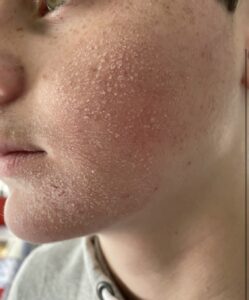 Eczema is a condition that makes your skin irritated and itchy. It often causes a rash that’s red, blistery, oozing, scaly or brownish. There are several types of eczema, including atopic dermatitis, contact dermatitis, nummular eczema and dyshidrotic eczema. However, the most common is atopic dermatitis. Millions live with atopic dermatitis. In fact, one in 10 Americans has atopic dermatitis.
Eczema is a condition that makes your skin irritated and itchy. It often causes a rash that’s red, blistery, oozing, scaly or brownish. There are several types of eczema, including atopic dermatitis, contact dermatitis, nummular eczema and dyshidrotic eczema. However, the most common is atopic dermatitis. Millions live with atopic dermatitis. In fact, one in 10 Americans has atopic dermatitis.
Atopic dermatitis is often called atopic eczema or simply eczema. It usually develops by age five, but people of all ages, from newborns to adults 65 years of age and older, live with this condition. Atopic dermatitis is not contagious.
